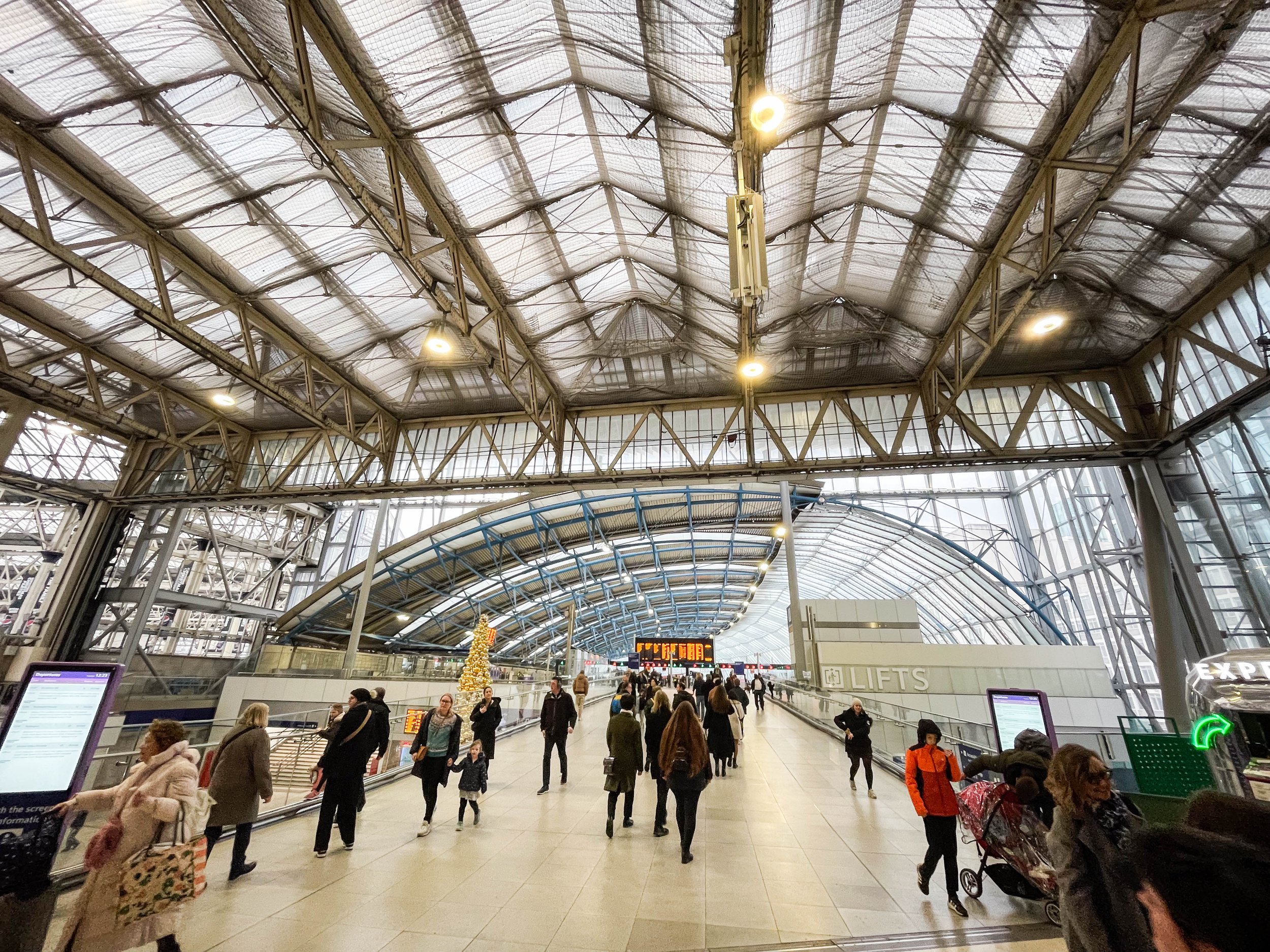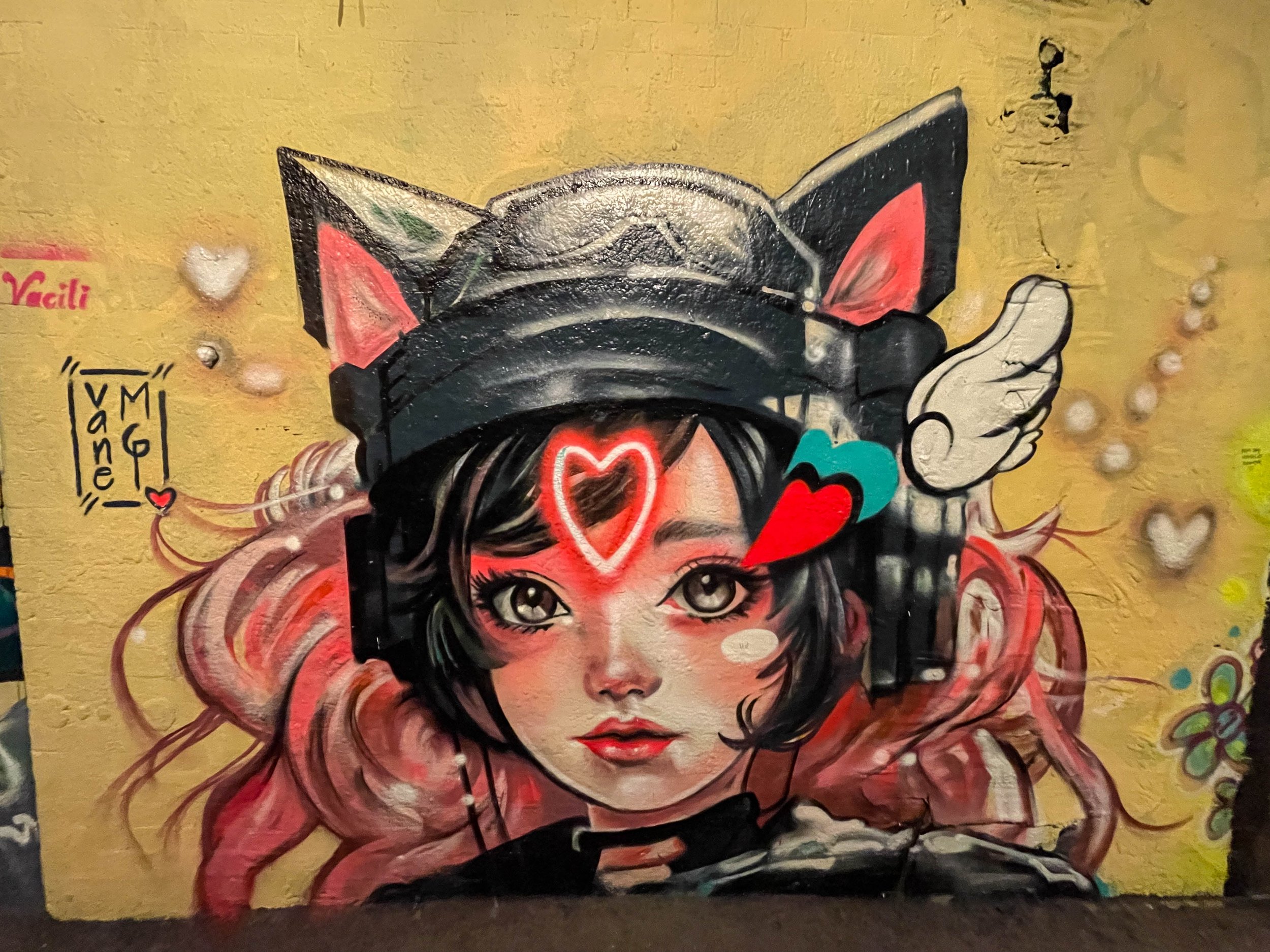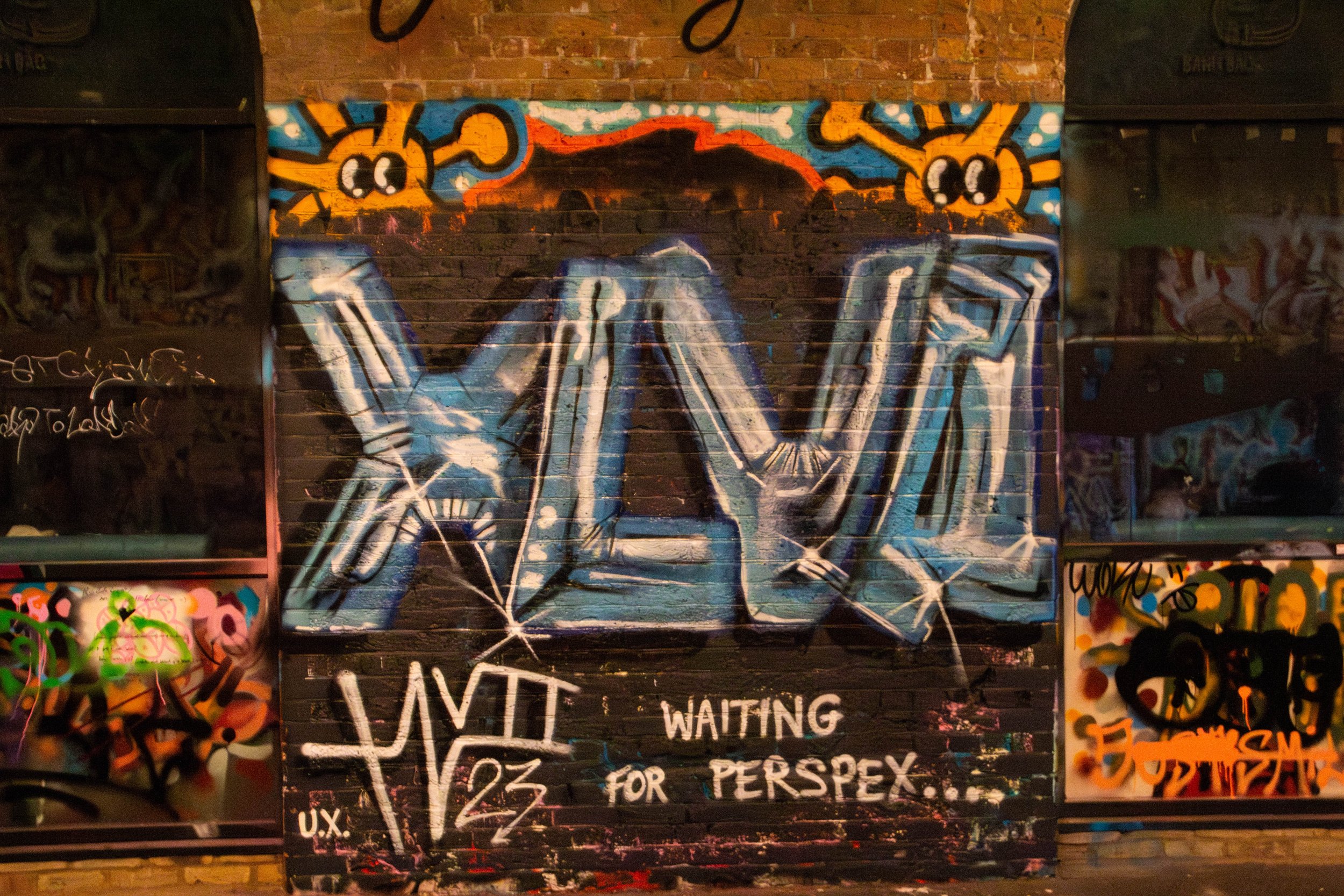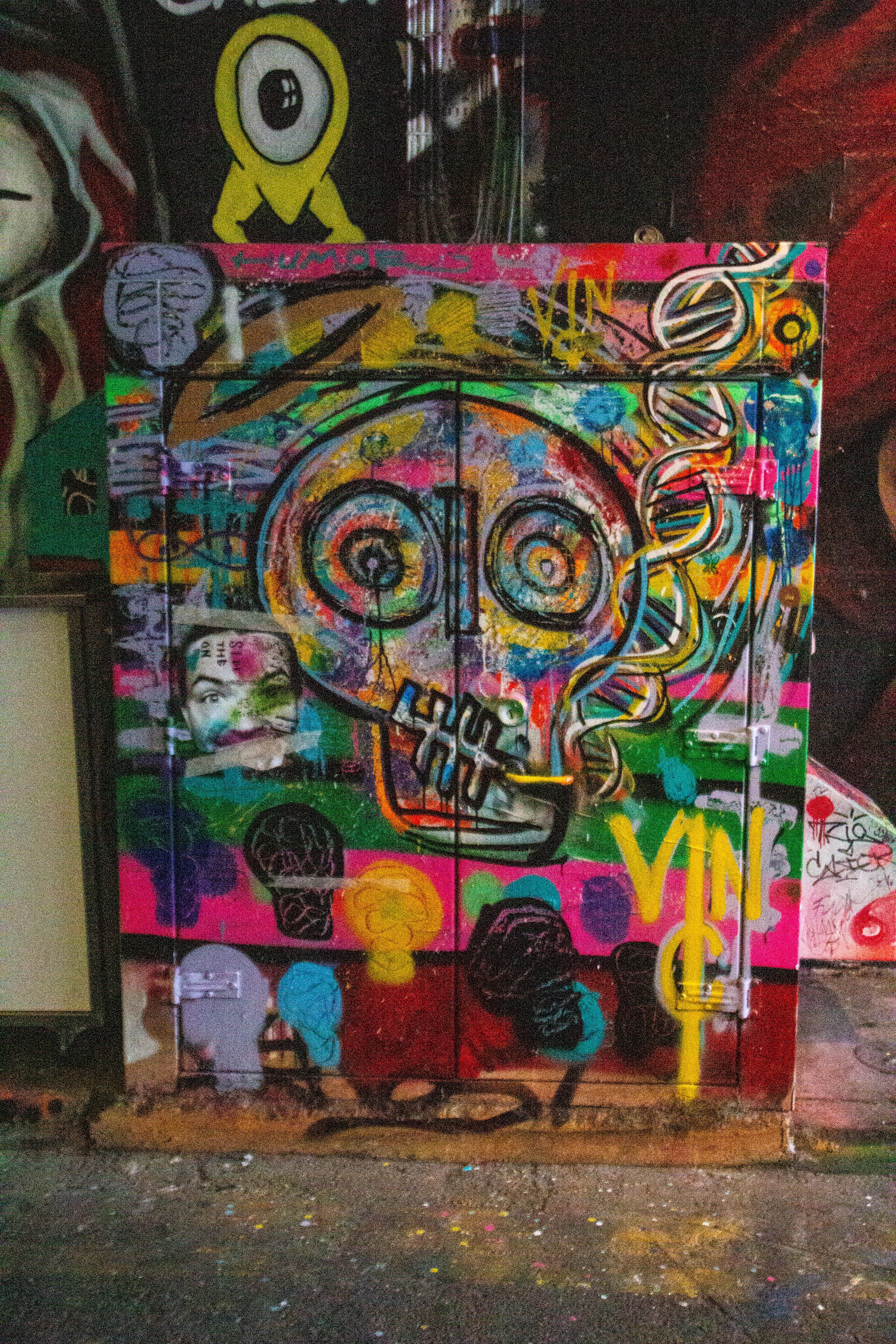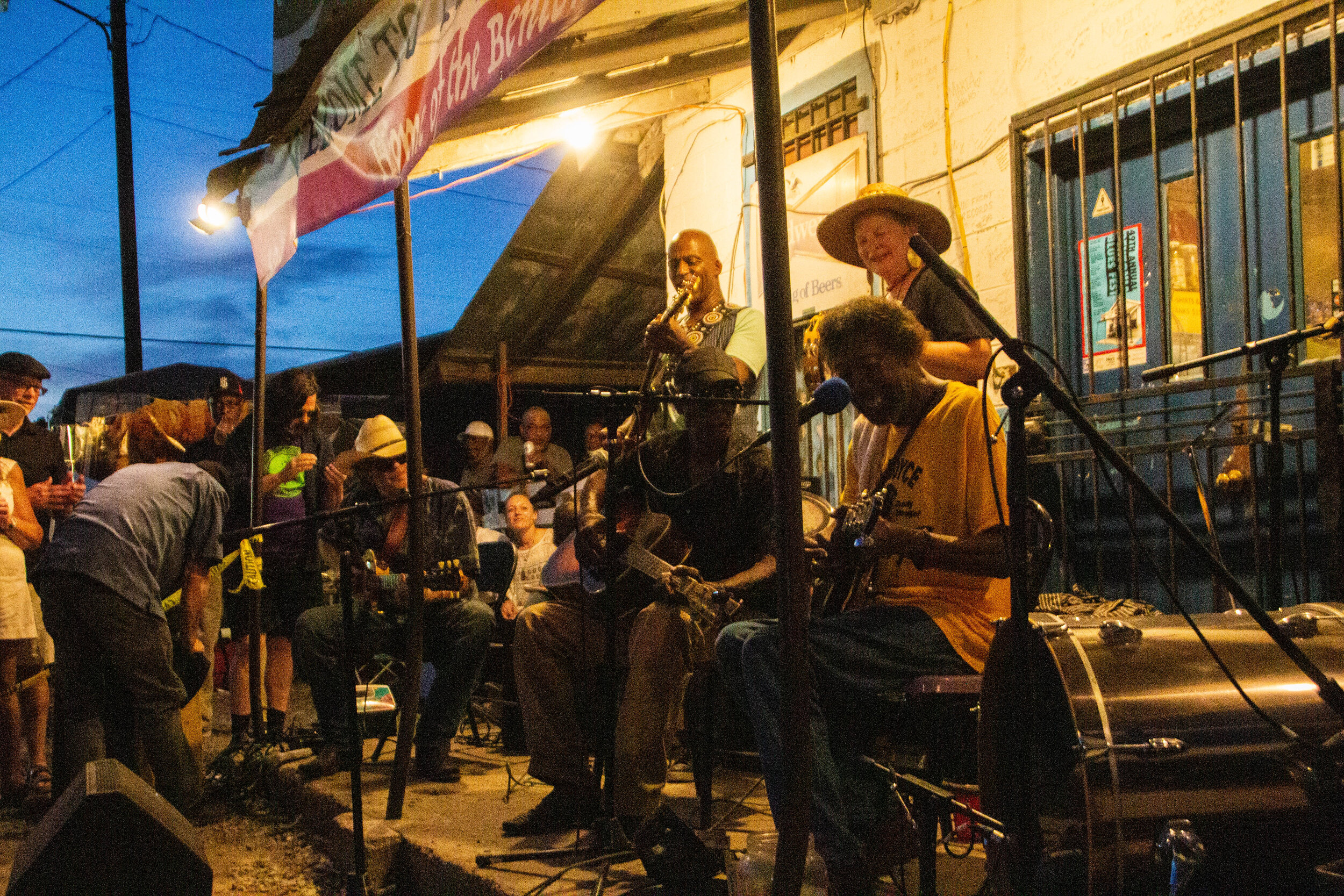In the previous installment on street art in London (volume 1), I said the following:
“When I moved here, it quickly became apparent that London’s many famous murals were not all conveniently located in the same few alleyways as had been the case in some other cities. London was going to make me do some WALKING in order to find its murals. This was a true scavenger hunt.”
Well… I stand corrected! When I wrote that article, I hadn’t yet visited the Leake Street Arches. I did know about it, but I hadn’t yet gotten around to actually visiting. And then, the day after I published the previous London street art piece, I found myself there by sheer coincidence when I met up with a friend for dinner. And it was just SO much cooler than I had expected!
I came back a few days later with my camera to put this article together. But before we dive into mural madness, I think some geographical context would be helpful. The Leake Street Arches are literally underneath Waterloo station, which is a big train station in Central-ish London. It’s also about a 5-minute walk from a bunch of super iconic stuff like Big Ben, Westminster, the Eye of London, the Strand, and Trafalgar Square. Buckingham Palace isn’t too far away either, as the crow flies.
My instinct in scavenging for street art in a new city is to look for edgier neighborhoods, where there is lots of empty wall space and fewer tenants to get angry about people with cans of spray paint beautifying that wall space. That is NOT central London. This an area that is wealthy, historic, and dense. There is very little empty wall space here. Here’s a few pictures from right around the Leake Street Arches and the map so you can see where we are.
Anyway, Murals…
So, despite all of the pomp and circumstance of Central London, in spite of the dense grandiosity of this area, next to Waterloo Station there are a couple of different entrances to an underground tunnel that looks like something straight out of Teenage Mutant Ninja Turtles. Check this out…
Inside this tunnel, every square centimeter of space was painted. Every. square. centimeter.
I’m not going to lie: the low light in this tunnel made this shoot challenging. I apologize for the noise you’ll see in some of these photos. I did my best to deploy Adobe’s new AI-powered noise correction tool, but it will only get me so far. It’s a shame because there is some incredible art in this tunnel and I don’t think I’ve been able to do all of it justice.
Oh, and you will notice some Christmas-themed murals in here. It was close to Christmas when I did this shoot.
Anyway, without further ado, here’s the LEAKE STREET ARCHES, LADIES & GERMS…
Earlier in this article, in discussing where street art is typically found, I referenced “empty wall space.” Well, there are some beautiful murals in here for sure… but what impressed me most was not on any wall but actually on the CEILING. Above my head, an equally beautiful array of murals unfolded as a series of urban frescos. This is truly the Sistine Chapel of street art. I can’t even imagine how difficult this stuff must have been to paint.
If you can’t tell by the lights hanging on the ceiling, the “establishment” has clearly embraced what is happening in this tunnel. This seems to have allowed a level of permanence to this art that is unusual. I compared these murals to frescos, and I really want to underscore that reference point. Seeing these murals on the ceiling truly elevated the art form to me—no pun intended—because it so closely paralleled the frescos normally reserved for elaborate/historic European churches. At the time when those churches were originally built—i.e., the Renaissance period—the art that was going onto the ceilings would have been considered “contemporary.” So, what would it look like if we took the same approach to our spaces today as they did during the Renaissance? Well, probably something like this…
I can understand if the photos of the entrance to this tunnel at the top of this article looked a bit sketchy and forboding—but this is honestly the least sketchy place I’ve ever visited doing one of these articles. I have visited some truly terrifying places to capture the murals in these articles (*cough* Saint Louis *cough*) but this was not one of them. In fact, there was a pretty steady stream of families with children walking through this place.
One interesting element of street art in general is that it’s nearly always temporary. Just like at Saint Louis’s Mural Mile, the artistic contents of this tunnel are constantly being painted over to make way for new pieces. The pieces on the ceiling seemed to be an exception to this because it would be so difficult to get up there… but the rest of this tunnel is a kaleidoscope. In fact, many of those families walking their children through here do so with their own cans of spray paint. I passed at least 5 kids scribbling onto these walls. None of them were doing it on top of one of the murals… but the realization of how frequently beautiful work must get painted over was a painful one. It’s the circle of life I suppose. ~Le sigh.
Anyway, as always, I have done my best to find and credit every artist involved in the creation of the murals above. However, if I have missed anybody, please reach out and let me know so I can come back and update this article.
32dutch (@32dutch)
slae.one (@slae.one)
Cong Yunfeng (@yunfeng_cong)
Marco / Doppel (@doppelwashere)
Lewis Doherty (@pkbu_icu)
AND Jeremy Novy (@jeremynovy), whose work I actually recognized from this installment on San Francisco—it’s the same-ish unbranded/anonymous koi fish stencil! So I basically just got on Google and typed in “koi fish art on street” and I found him via this article from SFGate. I love it when I can track things down like this!
This has been VOLUME 2 on street art in London. There will absolutely be a volume 3 and 4, but they may be a little ways in the future still. Stay tuned for other non-street art content in the meantime.








